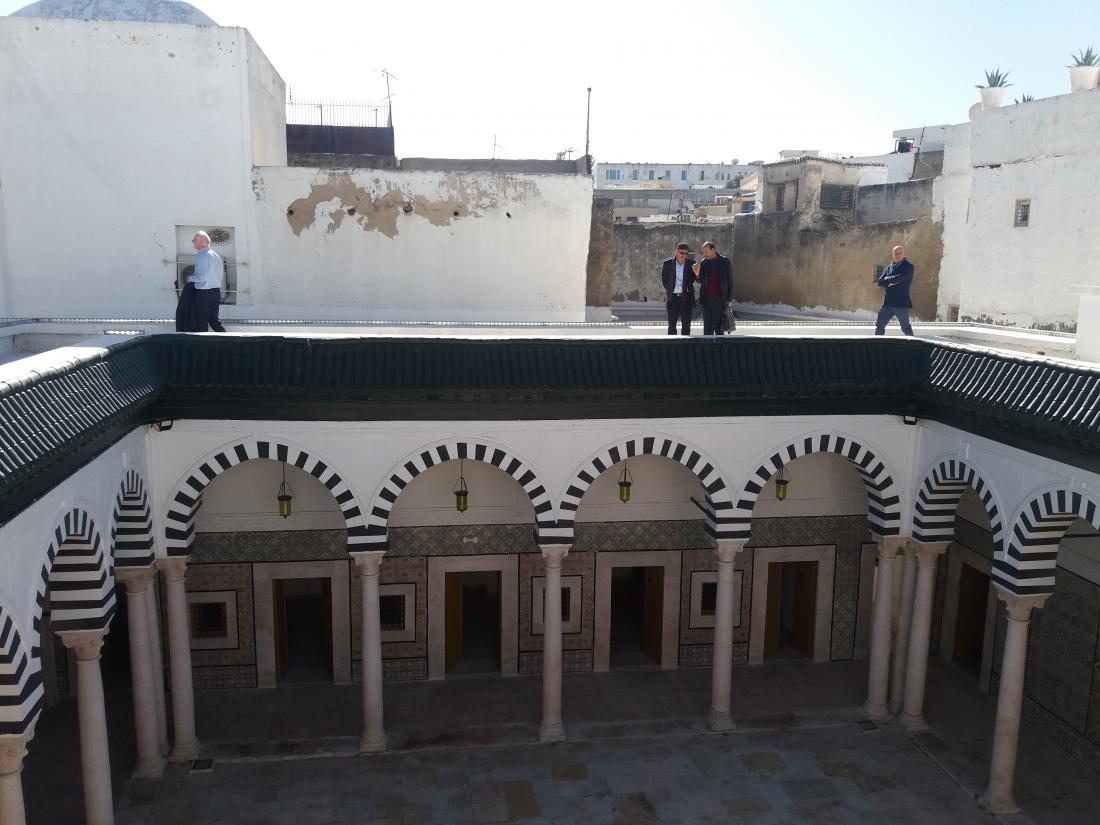Tunisia: NAWAMED to implement living green walls for greywater treatment and reuse

CERTE together with IRIDRA, both partners of NAWAMED project, organized the first technical visit to the TDC/SWM-House (Technical Demonstration Center / Sustainable Water Management House) where the demonstration pilot for water treatment through nature-based solutions is planned to be implemented.
The workshop was the occasion to present the project and the TDC/SWM-House by CERTE to local stakeholders.
The TDC/SWM-House is a technological and capacity building platform constructed in the frame of EU funded projects and used by CERTE as a demonstration area testing and monitoring several technologies for wastewater treatment and reuse adapted to our context. It includes also training and analytical facilities for students and stakeholders. The global concept around the TDC/SWM-House is local water management with the integration of unconventional water as resource and multi-use adapted solutions for zero discharge.
Then, IRIDRA experts presented to the public the project idea of the living worm walls for greywater treatment to be installed at the TDC/SWM-House, showing examples of construction. A feasibility assessment for the installation of a greenwall at the TDC/SWM-House has been conducted and a discussion with the participants allowed to identify different potential sites adapted to the concept of green walls and the local context. The available surface for the installation is about 80 m2.
Furthermore, the representatives of the Municipality of Tunis, CERTE's associated partner in NAWAMED, made an interesting proposal consisting to extend the installation of the greenwall pilot, used to treat and recycle greywater, to the Medina.
The installation of this technology in the Medina of Tunis will have a high visibility for the citizens and will play a role in raising awareness in relation to water management, wastewater reuse and the performance of nature-based technologies. Indeed, the Medina has limited space available and the use of walls for treatment and vegetation is very appropriate.
Thus, on the second day, a visit was made to the Medina with a team from the Municipality of Tunis to explore the possibilities of implementing green wall for greywater treatment, for instance in the Cultural Center BirLahjar. However, more exploration is necessary as the greywater production is limited and a meeting is planned for further technical discussion.
The main advantages of such installation are the very high impact in terms of visibility and the expected involvement of the social components for its maintenance and operation, linked therefore to the social acceptance of the technology and approach and to a general increase of awareness about sustainable use of water and green infrastructures potentialities.
For more information about NAWAMED, please visit the project website.









